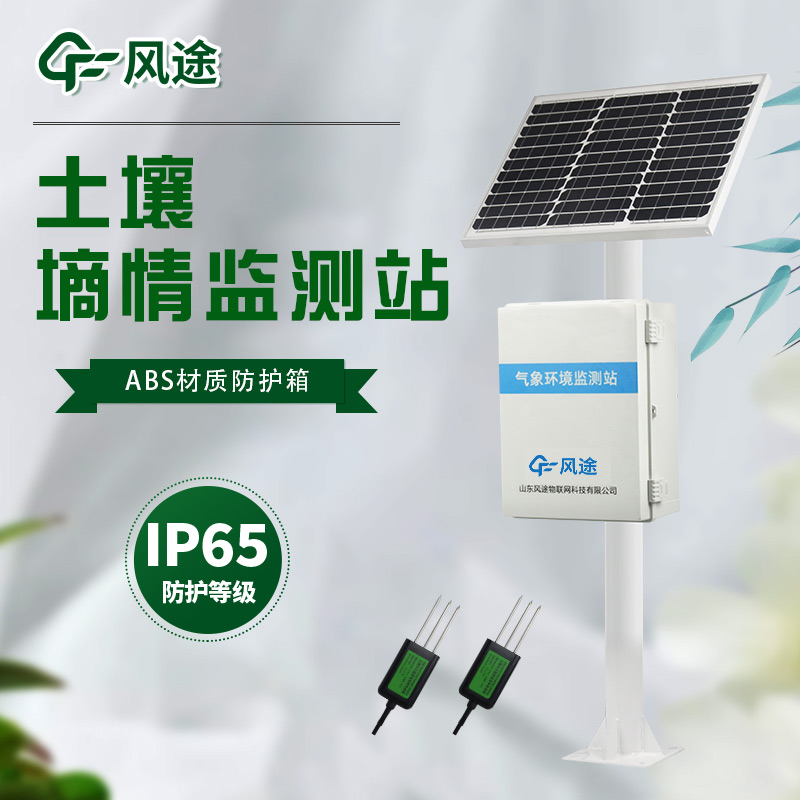Shandong Fengtu IOT Technology Co., Ltd
Sales Manager:Ms. Emily Wang
Cel,Whatsapp,Wechat:+86 15898932201
Email:info@fengtutec.com
Add:No. 155 Optoelectronic Industry Accelerator, Gaoxin District, Weifang, Shandong, China

Sales Manager:Ms. Emily Wang
Cel,Whatsapp,Wechat:+86 15898932201
Email:info@fengtutec.com
Add:No. 155 Optoelectronic Industry Accelerator, Gaoxin District, Weifang, Shandong, China
time:2024-10-29 08:48:23 source:Weather Station viewed:498 time
To formulate an irrigation plan based on soil moisture monitoring data, multiple factors need to be taken into comprehensive consideration, including soil type, crop water requirements, historical and real-time evaporation data, crop growth stages, and real-time weather changes. Firstly, understanding the soil type and the moisture requirements of the crops is fundamental, as different soils have different water-holding capacities, and the water requirements of crops also vary in different growth stages. Moreover, collecting historical and real-time evaporation data is helpful for calculating the water requirements of the crops. Use soil moisture monitoring equipment to collect soil moisture data at different depths.
After collecting these data, the frequency of irrigation and the amount of each irrigation can be calculated to ensure that the crops obtain sufficient water during the critical growth stages. Finally, continuously monitor soil moisture and weather forecasts in real time so as to promptly adjust the irrigation plan to cope with possible future weather changes. If rainfall is predicted in the future, the amount of irrigation can be appropriately reduced to avoid wasting water resources.
The utilization of intelligent Soil moisture monitoring equipment can further enhance the precision of irrigation. These systems are capable of providing functions such as data reporting and collection, visual analysis, and data mining applications, helping farmers achieve precision irrigation. Meanwhile, ensuring the quality of the monitoring data is also of crucial importance. The use of a data verification and repair system can improve the efficiency and quality of data processing, providing reliable data support for irrigation decisions.
Fengtu now launches an advanced Soil moisture monitoring equipment, which integrates a data collection module, soil sensing components, wireless data transmission components, a Global Positioning System (GPS), and a power module, and is able to continuously and realistically track the humidity and temperature conditions of different soil layers. The system transmits the collected data instantly to the application platform on the user's computer or mobile device through the embedded wireless communication technology.

Environmental meteorological monitoring system, the use of cloud computing platform technology to achieve a new type of intelligent weather station project with high stability, real-time and scalability, the system adopts distributed architecture, through the server as the core equipment, the massiv...
Intelligent Soil Moisture Monitor is an instrument specialized in obtaining key information such as soil moisture, soil's temperature and humidity. It integrates data collection, storage, transmission and management functions, and is able to transmit soil moisture information wirelessly and trac...
In this day and age, the importance of water resources cannot be overstated, as it is a basic condition essential to the survival of human beings and living things. Water pollution and continuous consumption of water resources become more and more scarce, which puts forward serious problems and chal...
The integrated automatic rainfall monitoring station is an unattended rainfall monitoring equipment. It not only has the incomparable advantages of traditional rain gauges and manual observation instruments, but also plays a significant role in improving work efficiency and reducing human errors. Th...